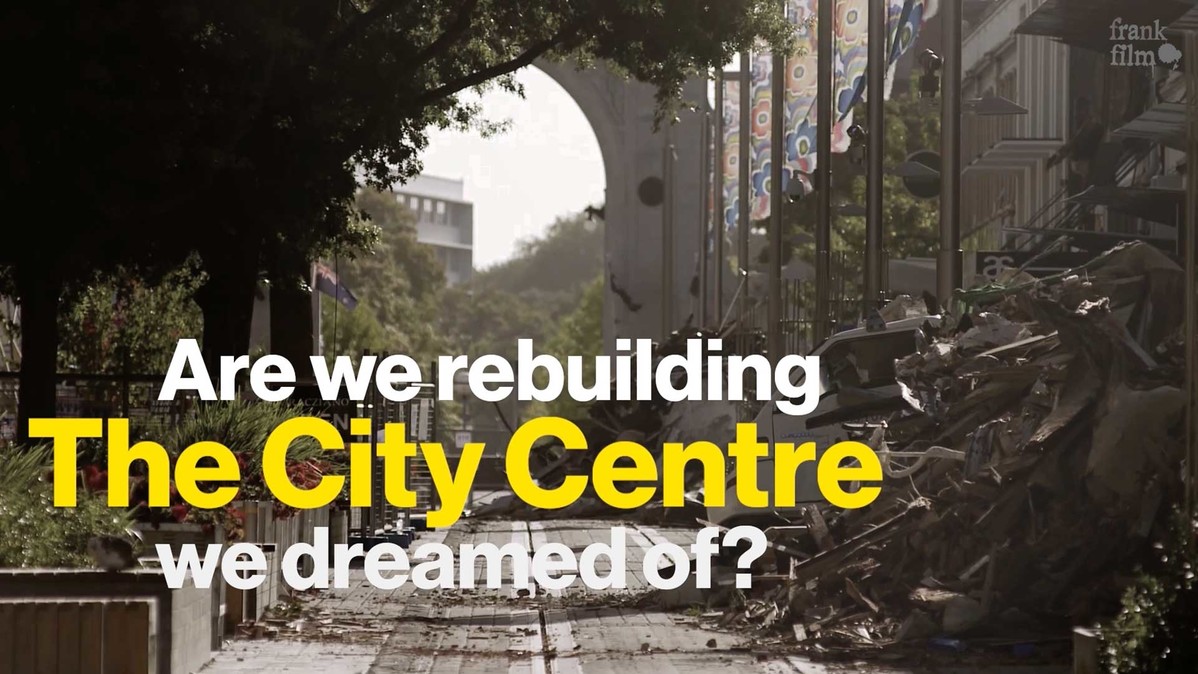3/. Central City — Is it what we dreamed of?
View all4
Next4/. Housing — How can we make it affordable? Play
Share
Twitter FacebookEven before the earthquakes of 2011, Christchurch’s CBD was struggling. But with up to 70 per cent of the buildings in the centre of the city scheduled for full or partial demolition, Christchurch has been left with an even larger hole at its centre. Christchurch Dilemmas asks, how can Christchurch rebuild the city’s heart?
Read moreJames Lunday, an urban designer who was involved in designing the Melbourne laneways project, says the rebuild also represented an opportunity for the city: “You can become an amazing beacon for how a new way of urban living can be created,” he says. Lunday visited the red-zoned central city immediately after the earthquakes in 2011, and has been returning to Christchurch in the years since. He says bringing people back from the suburbs is a challenge globally - not just for those struck by disaster.
“Internationally what’s driven the reinvention of cities is bringing people in to live in the centre - building new apartments downtown, reinventing the lanes, excluding traffic from areas, giving the streets over to people, greening the streets, local markets - something you don’t get in the suburbs.”
“It’s where all the best things can congregate together and everybody can enjoy them.”
But Lunday has concerns about the numbers of large-scale developments springing up through the city. He argues they don’t allow for the “fine grain” of independent shops, owner-operator businesses and startups that give the CBD an edge over the suburban malls. “We’re seeing v big buildings replacing what was a whole myriad of small buildings,’ he says. “We’re still building a 20th century city - built for the car, wide streets, and no activity.”
For this episode, Christchurch Dilemmas looks internationally to see how cities have revitalised their centres. In the Pearl District of Portland - a previously run-down industrial area of the inner city, which Lunday says has now been transformed. “In this part of the city, the pedestrian owns the streets.”
Closer to home, Christchurch landscape architect Di Lucas ran a design competition in 2013 for mixed use developments in the city.
“Mixed use means having commercial activity, like retail and offices and residential - apartments, townhouses on one site,” she says.
Lucas argues genuine mixed-use keeps people in the centre of the city, where they can live, work, eat and play in one space.
“But since the competition very little mixed use has developed as yet,” Lucas says. “A lot of people used existing use rights to build purely commercial, there’s fire regulations that make it expensive to do the mixing.”

Building for families first revitalised this Portland neighbourhood.
San Francisco, Little Italy is one model for building the compact, modern and mixed use city, Lundy says. “There’s no architectural ego on display here - these are houses for ordinary people, that have variety and fun about them - you need everything from young people, families through to elderly elderly singles - all living and mixing in the same community, using the same facilities.”
On Christchurch’s High Street, developers Richard Peebles and Mike Percasky are working to restore what remains of one of the heritage buildings.
They say the development will cater to small food businesses, with a covered market area, and spaces for small independent operators rather than national brands. “Fifteen years ago this area was just all second hand stores… Then it started developing, getting a bit trendy, some of the boutique fashion people started coming, and it was actually becoming really successful pre-quake. What we’re trying to do is bring those operators back,” Peebles says.
So how can Christchurch go about getting people back into the city centre? And what’s preventing it from happening?


Top Comments
Bev Bill Parkes 9 years, 3 months ago
Yes lets bring Cathedral Square to life, give it a heart again,people centered with apartments and areas for families, green space , keep the buses and traffic on the peremiter, easy links to the magnificent Arts centre.Coventry cathedral was bombed badly in WW2 and yet the remains are a very special green space where people in the city have lunch, people sit and read books Lets not lose sight of other options.
Share
Twitter FacebookBarrie Greene 9 years, 3 months ago
I can see huge potential. I was walking around the city yesterday and the precincts and big business are taking shape.....but I only see it as a frame. There is still so much empty space that can be filled with mixed and creative smaller spaces that can develop organically. I for one am excited about the future.
Share
Twitter Facebook